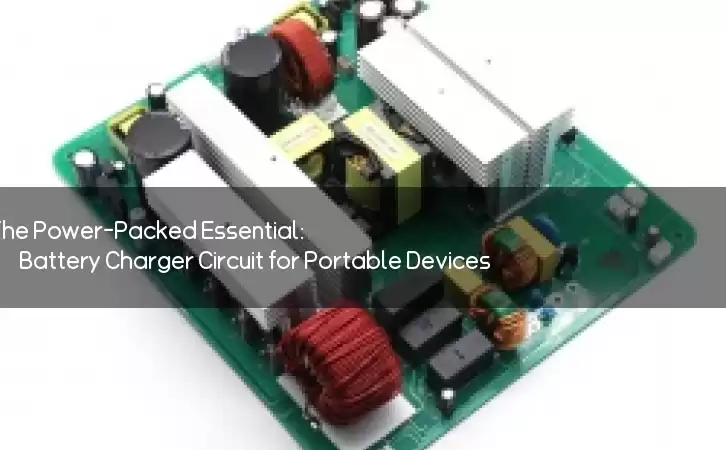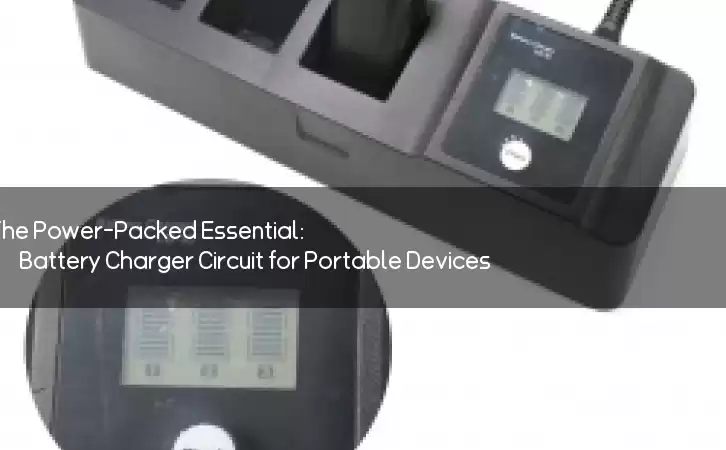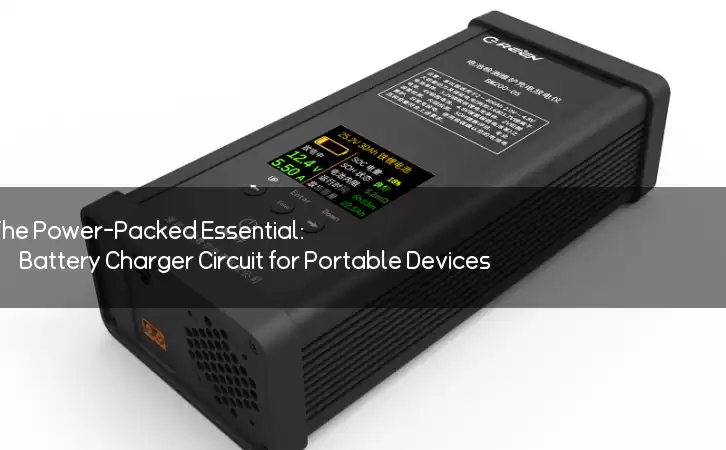Information Center
The Power-Packed Essential: Battery Charger Circuit for Portable Devices
Published:2023-05-04 19:39:53 Author:Green WCND Views:55Battery Charger Circuit: An Essential Component for Portable Devices

The increasing demand for portable electronic devices such as smartphones, laptops, tablets, and wearable technology has made battery charger circuits an essential component for their functionality. A battery charger circuit is an electronic component that charges rechargeable batteries by providing a regulated amount of current and voltage during the charging process. These circuits are an indispensable part of the modern world of consumer electronics, making life easier and more convenient.

Types of Battery Charger Circuits

There are several types of battery charger circuits that are commonly used today. The most popular are linear regulators, switched-mode power supplies (SMPS), and pulse-charging circuits.
Linear regulators provide a constant voltage or current output, but they are not efficient due to the large amount of power they waste as heat during the charging process. They are best suited for lower power applications and are typically used in low-cost battery chargers for cell phones and other portable devices.
SMPS circuits, on the other hand, are more efficient at converting voltage and provide more power output. SMPS circuits allow for faster charging times and are typically used in high-end devices, such as laptops and tablets.
Pulse-charging circuits use a high-frequency pulse to charge the battery. This type of charger is economical and provides a fast charging rate, but it can have a shorter lifespan for the battery and is typically used in lower-end devices.
Major Components of a Battery Charger Circuit
A battery charger circuit comprises several essential components that work together to provide a regulated flow of current and voltage to rechargeable batteries. These components include:
1. AC/DC Adapter – Converts AC power from a wall socket into DC power.
2. Rectifier Circuit – Converts AC power into pulsating DC power.
3. Filter Circuit – Smoothens the pulsating DC power and removes unwanted noise.
4. Regulator Circuit – Provides a regulated voltage and current output to the battery.
5. Charge Control Circuit – Monitors the charging process and switches off the charger when the battery is fully charged.
Advantages of Battery Charger Circuit
The battery charger circuit has many advantages and is an essential component for portable devices. Some of these advantages are:
1. Enhanced Portability: With the help of a battery charger circuit, portable devices, such as smartphones, laptops, and tablets, become more portable and can be used for longer periods without worrying about running out of battery.
2. Convenient Charging: Battery charger circuits provide convenient charging solutions that allow users to charge their devices quickly and easily.
3. Cost-Effective: Battery charger circuits are relatively cost-effective and provide longer battery life for the device, reducing the need for frequent battery replacements.
Conclusion
In conclusion, battery charger circuits play a significant role in the modern consumer electronics industry. They provide regulated flow of current and voltage to rechargeable batteries and make portable devices more portable and convenient. With the increasing use of portable devices, battery charger circuits are becoming more critical for the functionality of these devices. As technology evolves, more efficient and cost-effective battery charger circuits will continue to be developed, offering users faster charging times, longer battery life, and greater convenience.
Power Adapter Design and Customization Guide for Portable Electric KettlesI. Common Design Types for Portable Electric Kettle Power AdaptersPortable electric ke···
I. Common Design Types of Power Adapters External Independent Type (Most Common) Design: A standalone adapter (e.g., "black brick") connected to the p···
Handheld Vacuum Cleaner Power Adapter Selection GuideIntroductionHandheld vacuum cleaners have become a mainstream tool for household cleaning due to their port···
Drill Power Adapter Selection Guide.drill-container { font-family: Arial, sans-serif; line-height: 1.6; max-width: 800px; margin: 0 auto; padding: 20px; } .dril···





